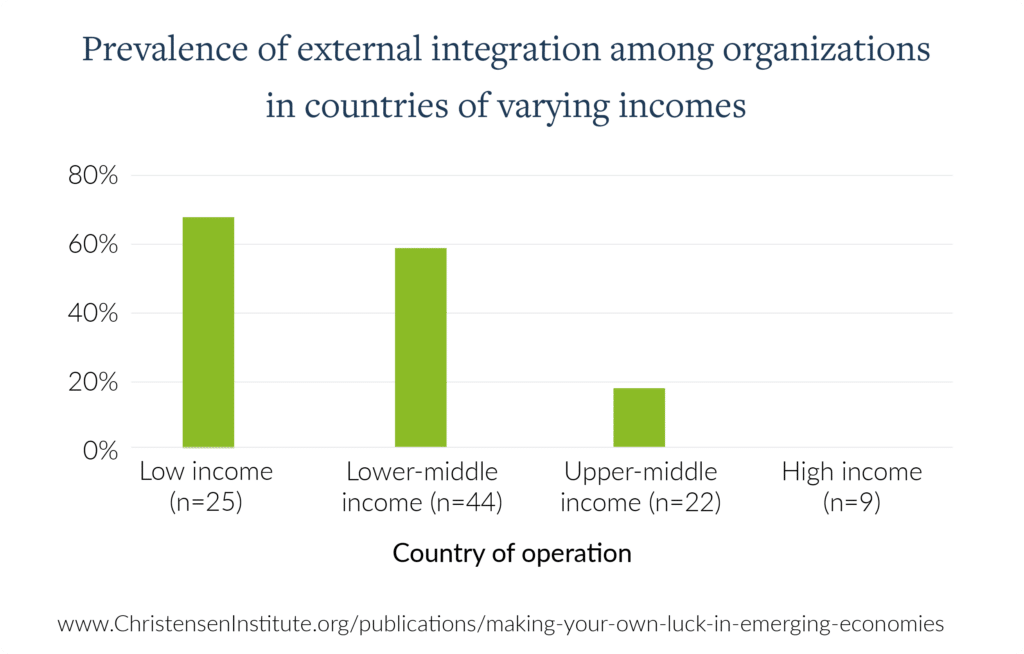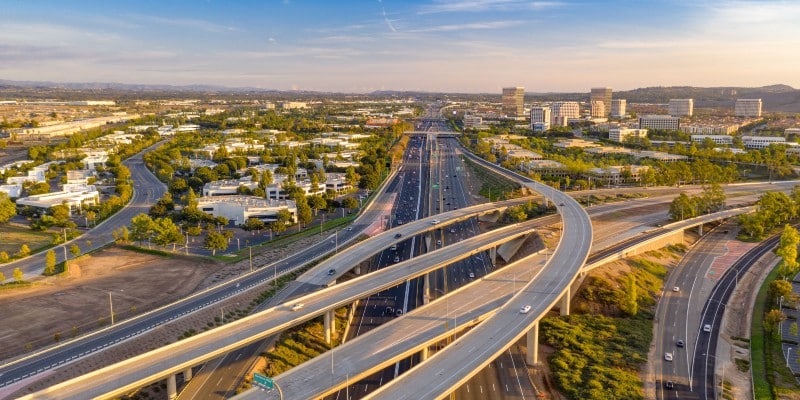In March, the Biden administration announced a behemoth infrastructure package. The more than $2 trillion plan is designed to create jobs, boost America’s productivity by building or upgrading the nation’s infrastructure, and position the United States as a leader in clean energy. The plan is so all-encompassing that the White House calls it “The American Jobs Plan.”
It may be tempting for citizens in low- or middle-income countries to study this plan and get a sense that their governments aren’t doing enough. Why can’t, for instance, the government of Bangladesh promote such a plan, albeit on a smaller scale? Isn’t it the government’s job to build and maintain its infrastructure? Interestingly, our most recent research sheds a light on this question.
In our study of 100 market-creating organizations across time, region, and industry, we learned that particularly in emerging economies, the responsibility often falls on the private sector—and more specifically, on organizations creating new markets. Roughly half of the organizations studied needed to “externally integrate,” meaning they had to invest directly in providing their own infrastructure; among those in low-income countries, more than two thirds did.

The organizations we studied did this out of necessity. Because opportunities to create new markets are usually in emerging economies where the governments have relatively little money to spend on such investments, market creation often requires organizations to fill in what are referred to as “institutional voids.” These investments ranged from building roads and providing their own electricity to investing in education or security. Had these organizations waited for their governments to fix or build the infrastructure they needed, they likely would still be waiting.
In the United States for instance, our research showed that during the 1800s and early 1900s it was individual entrepreneurs and private companies who built most of the early roads, rails, and canals in order to reach their new customers. Like many emerging-market governments today, the US government couldn’t afford such investments, so many of these companies issued stocks and bonds in order to fund the construction of these infrastructures. In New England, for example, private companies invested more than $6 million, which helped construct thousands of miles of highway.
To get a sense for how infrastructure ultimately evolves into something the government manages, it’s important to consider its relationship with innovation—and particularly market-creating innovation.
How innovations drive infrastructure
Market-creating innovations make complex and expensive products simple and affordable so many more people in society are able to “consume” them for the first time. Because they serve a vast number of people, they unlock significant value in society and trigger an almost insatiable demand for infrastructure. At the onset of a nation’s development, market-creating organizations are often tasked with making these investments, but eventually the dynamic changes and the governments take over. This happens because market-creating innovations have a habit of jumpstarting widespread prosperity. With the new markets come many jobs to design, make, and distribute the innovations, as well as a sustainable source of tax revenue that the government can use to fill in other infrastructure gaps.
For example, in the late 1930s roughly 80% of Japan’s roads were unpaved. With a GDP per capita of just $2,300, the government struggled to improve the safety of its roads. The United States, even at the tail end of the Great Depression, was still almost three times richer than Japan. Things began to change in 1937 when Toyota emerged, creating a new market of affordable vehicles for the people of East Asia. Hardly luxury vehicles, Toyotas were built for the masses as practical, economical cars that could withstand poor roads. Sales soared, and by the 1950s the government had secured a new source of revenue to improve its roads: gasoline and car acquisition taxes, earmarked for road financing.
It’s not just about who, but why: How innovations make infrastructure valuable
As I recently discussed, the value that lies in infrastructure isn’t in the infrastructure itself, but in what it distributes or stores. For example, roads, airports, and financial and legal systems are manifestations of infrastructure that enable us to store or distribute cars, planes, money, and law.
It is innovations that create value, and thus, make their supporting infrastructure valuable. As the responsibility of building infrastructure passes from market-creating organizations to governments, the latter would do well to remember this, and reflect both on why infrastructure is needed, and how innovations will make it valuable.
Although the main source of funding for infrastructure investments in many wealthy countries, such as the United States and Japan, has changed, the relationship between infrastructure and innovation hasn’t. In most poor countries where governments struggle to invest in infrastructure, they would do well to tap market-creating organizations directly, or indirectly to support their building of infrastructure. To try and copy the Biden Administration’s big and bold infrastructure plan would be to put the cart before the horse. That rarely ever works.
To learn more, see:
Making your own luck in emerging economies: Six innovative strategies for creating new markets



